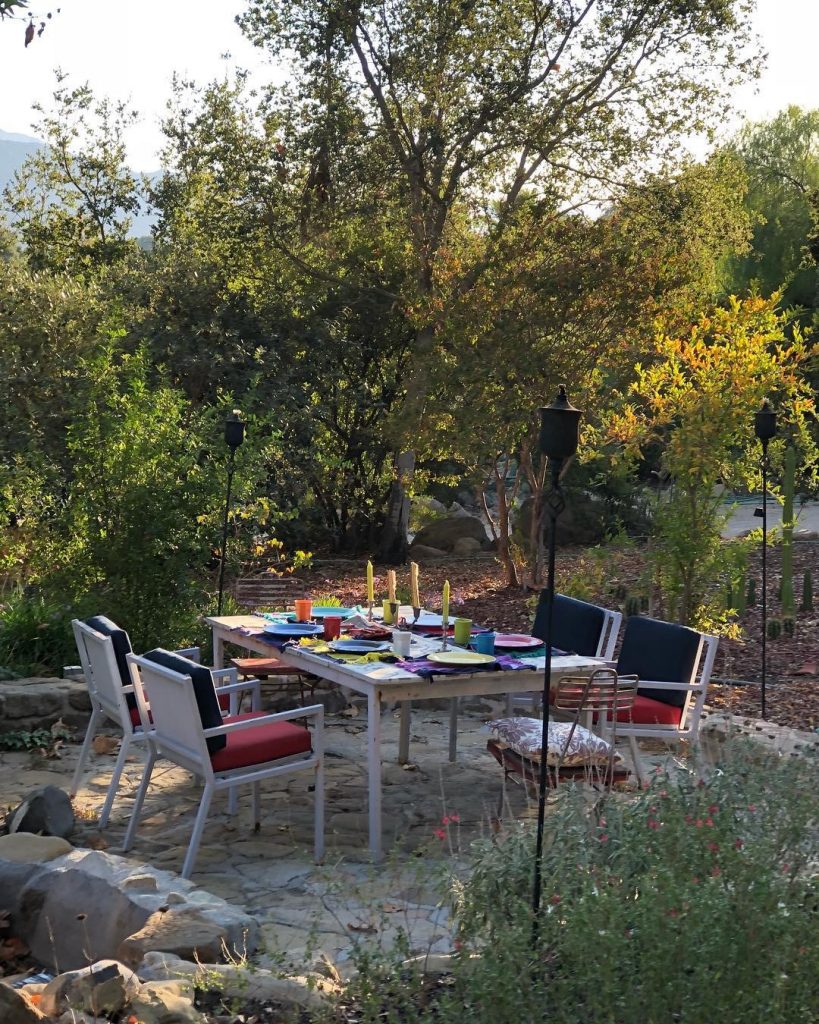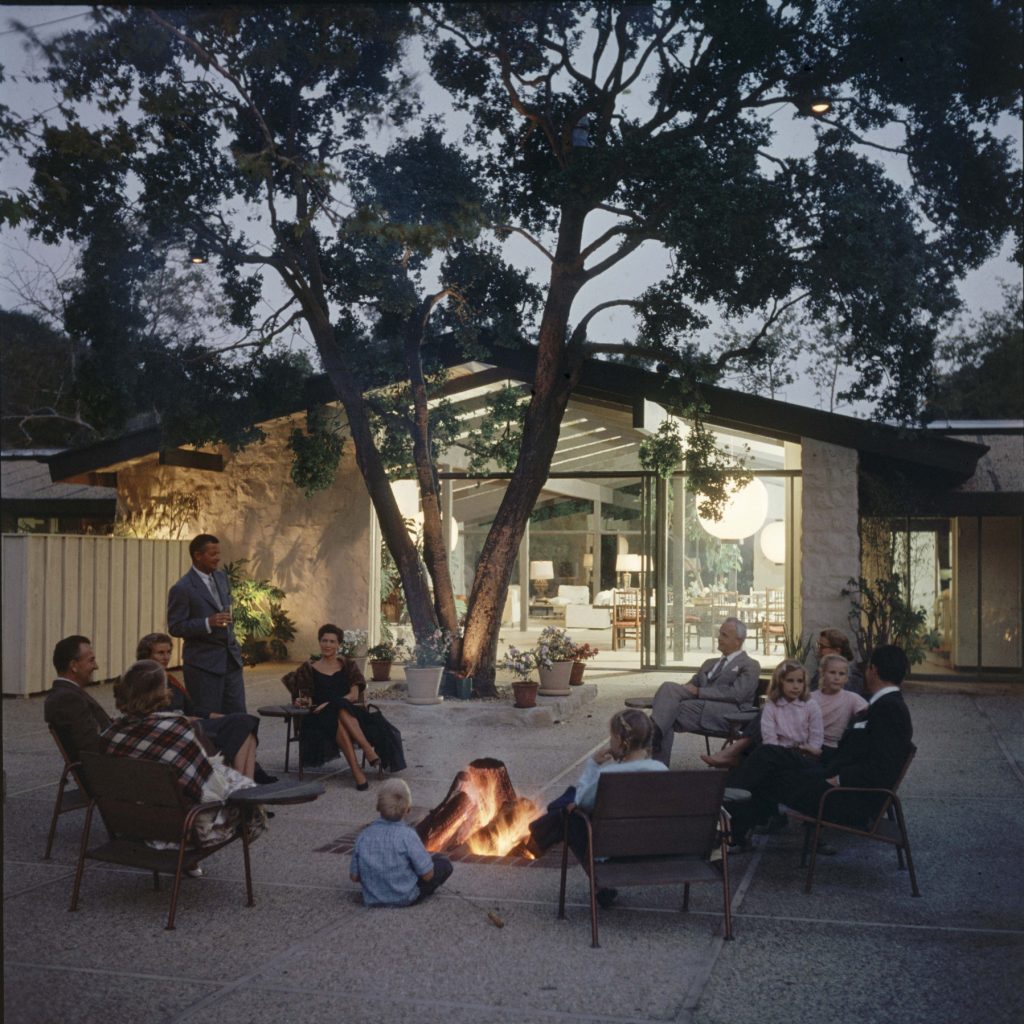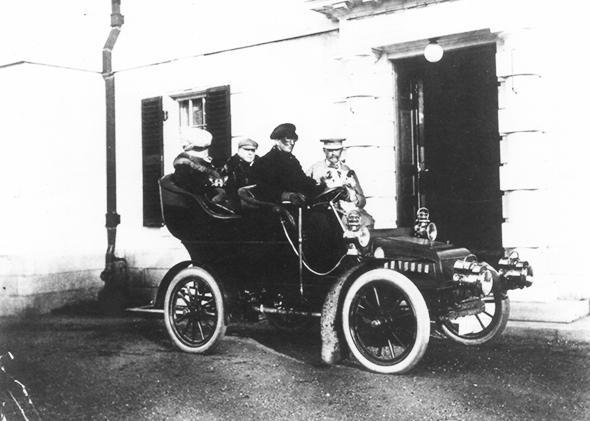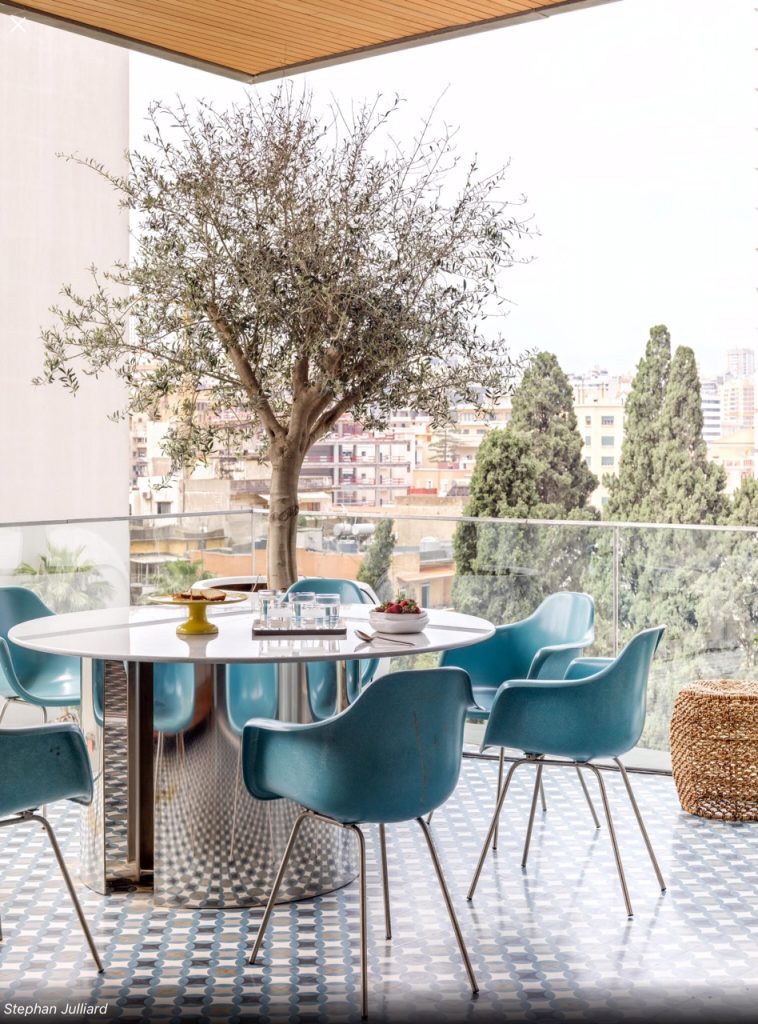
As I write this in the days before Thanksgiving, snow is falling steadily in the Rockies. It was 60 degrees yesterday, so I had an energetic day, washing windows (the better to see the snow!) and hauling the lawn furniture indoors. In these days of indoor/outdoor blurring, where the conservatory is another room of the house, I thought about comfort. And I thought about new garden furniture for next season. Years of gardening have given me back trouble (not age, you understand!) and I am keenly aware of the chairs I sit in, and the degree of comfort – or discomfort – they offer. Not surprisingly, many of my friends have the same level of consciousness about how and where they sit. Tracey Ryder and Carole Topalian, whose Ojai garden is pictured above, says, “We especially like hosting dinners with four to eight guests so that everyone can be engaged in the conversation–there is nothing better than having the conversation last longer than the candles!” As might be expected from the founders of Edibles magazines, comfortable seating is a prime concern towards reaching that goal.
While large, blocky patio furniture with its dense spongy cushions may be comfortable enough, unless you live where snow rarely falls there’s the matter of hauling them into shelter through winter. They can, of course, be shrouded in purpose made covers, but one good snowfall and it looks like there are several mini-smart cars parked on the terrace. So finding alternatives has consumed much of my online time, supplemented by what I learned researching my book Mid-Century Modern Landscapes.

In the mid-50s, mobility was all the thing: drink carts had wheels, lawn chairs folded up, and repurposed war materials were made into functional furniture. Think of tubular framed deckchairs with rope seating: lightweight, durable, and comfortable. Fiberglass and molded plywood, too, were put to work by designers, notably Ray and Charles Eames, and met the same requirements. Contemporary designers are finding inspiration in that period, when the concept of “outdoor living” had a renaissance: in terms of fashion’s pendulum—what’s old is new again—outdoor living had a serious moment back in the Victorian era. Croquet and badminton were among the popular games encouraged for women’s exercise, deemed ladylike enough to get them out of the drawing room’s febrile atmosphere and into health-giving fresh air. Picnics, too, along with motorcars, became wildly fashionable, the one enabling the other: Edith Wharton was a fan even managing to drag Henry James along on motoring jaunts to a picnic spot (he loved it!)

Back to today, and the considerations that in my estimation are crucial to good garden seating:
- One needs to recline into the chair yet be supported. Avoid 90-degree angles or anything remotely like a church pew and check how your lumbar region is responding.
- Soft landing. An adjunct to 1 is what sort of cushioning is there? I dread entering a restaurant to find wooden chairs sans padding; it’s as though there’s a sign on the table, “Enjoy the food, but hurry up.” I want my guests to linger, savoring flavors of food and conversation.
- One should be able to sit and rise easily from the bench or chair. In other words, the dimensions should be made for real people of all ages, who typically aren’t gymnasts.
- It should be possible to move a chair with one hand, or a table or bench with the help of one other person, not a team of stevedores.

In conclusion (and off topic), I would just like to say, the snow continues to fall. It is the gardener’s friend. I say this because a snow blanket protects plants, and in melting waters them through a dry spell, which is to be grateful for in a moody Front Range winter. I was reminded of this by a posting from Tizer Botanic Gardens & Arboretum, who overwinter flats of perennial starts in stacks beneath the eaves of the greenhouse. As the blanket of snow slips down the greenhouse roof it lands on the stacks, protecting the plants until spring, and watering them as it melts. The survival rate is, they say, 95%, pretty good going as Tizer is in Jefferson City, Montana, “in the heart of the Elkhorn Mountains”, and a harsh Zone 3; mid-November temps were already in the ‘teens. They clearly know a thing or two about winter.
Copyright Ethne Clarke, 2018.


